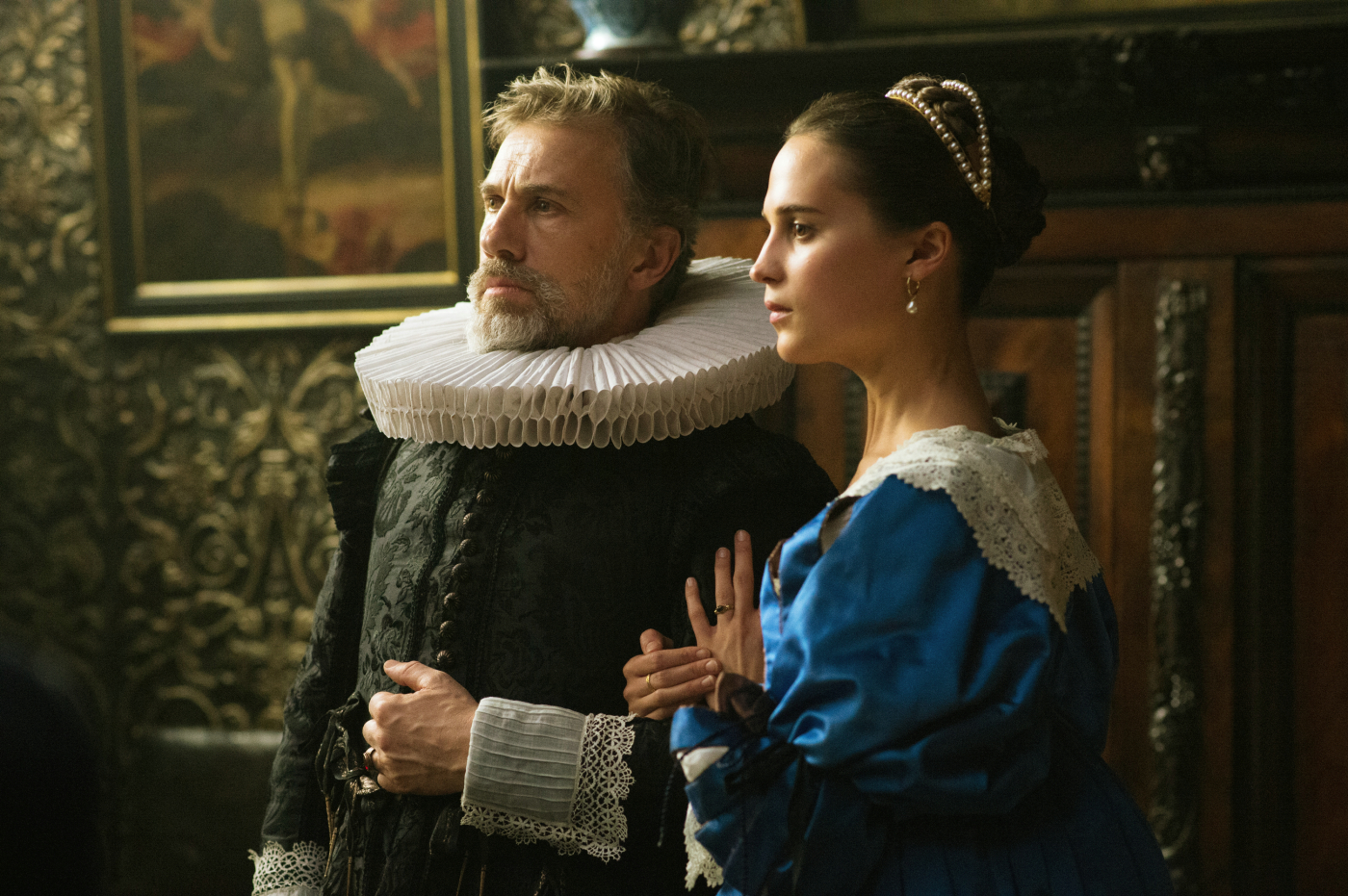
'Tulip Fever' says as much about two lips as tulips
By Martha K. Baker
I took the loveliest little nap during the screening of Tulip Fever. The theater's temperature was just right, the seat was comfy, and the company was cozy, so I drifted off. When I awoke, I hadn't missed much in this romance where two lips kiss while tulip prices rise.
Tulip Fever is based on that era in Holland's history known as "tulipmania." That was when tulip bulbs were pricey little onions, but that aspect of the economy pales next to the timeless quest for love in Tulip Fever. Lust is as hot as the speculative market for bulbs known as "breakers," that is, the tulip flowers wherein red breaks through the white of the blossom.
People were willing to gamble on the rising prices of tulips, including people without other resources. That would be people like an artist, played wanly by Dane DeHaan. He has been commissioned to paint portraits of a couple, the Sandvoorts. Christoph Waltz plays an older, successful man, married to a former orphan. He rises above the rest of the cast. Alicia Vikander plays the dependent and hungry wife, who provide him with more children. An Oscar should go to the costumer, who provided Vikander with cleavage in her blue ball gown even though, in her many nude scenes, she shows no such bosomy promise.
Director Justin Chadwick also directed another history, The Other Boleyn Girl, but he fails to boost Tulip Fever above its cliched script. Writers Deborah Maggoch, who wrote the novel, and Tom Stoppard, renowned playwright, really should have managed the screenplay and avoided lines like, "All we have to do is put all our eggs in one basket." Trite, not tight.
However, the film looks good -- all those tans and taupes, the crowded streets and fishy markets. Along the way, Tulip Fever can deliver neither a believable scene of a birth -- or even a credible story.


